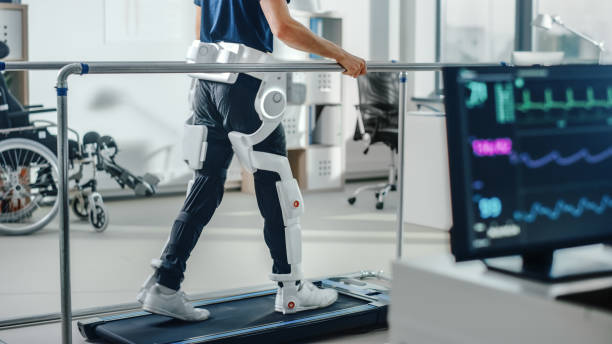Living with Knee Pain? Explore Replacement Options
Knee pain can significantly impact daily activities and quality of life. For many individuals, conservative treatments like physical therapy, medication, and lifestyle modifications provide sufficient relief. However, when these measures fail to alleviate persistent pain and mobility limitations, knee replacement surgery may become a viable option. This surgical intervention has evolved substantially over decades, offering patients improved techniques and prosthetic designs that can restore function and reduce pain. Understanding the available options, recovery expectations, and potential outcomes is crucial for those considering knee replacement as a solution to chronic knee problems.

What is prosthetic knee replacement surgery?
Prosthetic knee replacement surgery, medically known as knee arthroplasty, is a procedure that involves removing damaged portions of the knee joint and replacing them with artificial components made of metal, plastic, and polymers. The surgery aims to replicate the knee’s natural movement while eliminating pain caused by damaged cartilage and bone. There are two primary types of knee replacement surgeries: total knee replacement (TKR), where the entire knee joint is replaced, and partial knee replacement, which addresses only the damaged portion of the knee.
During the procedure, surgeons remove the damaged cartilage and bone from the ends of the femur (thigh bone) and tibia (shin bone), along with a portion of the underlying bone. These are replaced with metal components that recreate the joint surface. A plastic spacer is inserted between the metal components to allow for smooth gliding motion. In some cases, the underside of the patella (kneecap) may also be resurfaced with a plastic component if it’s significantly damaged.
How long is the recovery time after knee replacement?
Recovery from knee replacement surgery follows a timeline that varies based on individual factors, surgical technique, and rehabilitation commitment. Typically, patients spend 1-3 days in the hospital following surgery. The initial recovery phase focuses on pain management, preventing complications, and beginning basic movements. Most patients can stand and walk with assistance within 24 hours after surgery, using a walker or crutches for stability.
The intermediate recovery period spans approximately 4-6 weeks, during which patients work with physical therapists to improve range of motion, strengthen the surrounding muscles, and gradually increase weight-bearing activities. Most individuals transition from walking aids to independent mobility during this phase. Full recovery generally takes 3-6 months, though some patients report continued improvement for up to a year after surgery.
Factors affecting recovery time include age, overall health status, pre-surgery physical condition, and adherence to rehabilitation protocols. Younger patients and those in good physical condition before surgery often recover more quickly. However, even elderly patients typically experience significant pain relief and functional improvement following knee replacement surgery, albeit with potentially longer recovery periods.
What are the benefits and risks of total knee arthroplasty?
Total knee arthroplasty (TKA) offers numerous potential benefits for individuals with severe knee damage. The most significant advantage is substantial pain reduction, with many patients experiencing complete relief from the chronic pain that limited their activities before surgery. Improved mobility is another key benefit, allowing patients to resume daily activities, moderate exercise, and hobbies they previously avoided due to pain and dysfunction.
Most knee replacements demonstrate excellent longevity, with modern implants having an 80-90% chance of functioning well for 15-20 years. This durability makes the procedure a viable long-term solution for many patients. Additionally, successful knee replacement surgery can lead to improved quality of life, independence, and psychological well-being by eliminating the limitations imposed by chronic knee pain.
However, like all surgical procedures, total knee arthroplasty carries potential risks. Infection occurs in approximately 1-2% of patients and can sometimes require additional surgery or implant removal. Blood clots in the leg veins (deep vein thrombosis) represent another serious complication, though preventive measures such as blood thinners and early mobilization significantly reduce this risk. Some patients experience persistent pain or stiffness after surgery, which may result from implant issues, scar tissue formation, or complex regional pain syndrome.
Implant-related complications can include loosening, wear, or failure over time, potentially necessitating revision surgery. Though rare, nerve or blood vessel damage can occur during the procedure. Additionally, some patients report dissatisfaction with the outcome due to unmet expectations about pain relief or functional improvement. These risks underscore the importance of thorough pre-surgical discussions with healthcare providers about realistic expectations and potential complications.
Comparing knee replacement options
When considering knee replacement surgery, patients should understand the different approaches available to make informed decisions alongside their healthcare providers.
| Surgery Type | Description | Typical Candidates | Recovery Timeline |
|---|---|---|---|
| Total Knee Replacement | Replaces entire knee joint surfaces | Widespread arthritis affecting multiple knee compartments | 3-6 months for full recovery |
| Partial (Unicompartmental) Knee Replacement | Replaces only damaged portion of knee | Arthritis limited to one compartment; intact ligaments | 6-8 weeks; generally faster than TKR |
| Patient-Specific Implants | Custom-designed based on patient anatomy | Patients with atypical anatomy or specific needs | Similar to standard TKR |
| Robotic-Assisted Surgery | Uses robotic technology for precise implant positioning | Candidates for traditional knee replacement seeking precision | Similar to standard procedures with potentially less tissue disruption |
This article is for informational purposes only and should not be considered medical advice. Please consult a qualified healthcare professional for personalized guidance and treatment.
Preparing for knee replacement surgery
Proper preparation can significantly impact both surgical outcomes and recovery experience. Most surgeons recommend pre-surgical physical therapy or “prehabilitation” to strengthen the muscles surrounding the knee, which can facilitate faster recovery. Weight management is also crucial, as excess weight places additional stress on the new joint. Patients who are overweight may be advised to lose weight before surgery to reduce complications and improve outcomes.
Home preparation is another essential aspect of pre-surgical planning. This includes arranging the living space to accommodate limited mobility, installing safety features like grab bars in bathrooms, and placing frequently used items within easy reach. Many patients benefit from arranging assistance for the first few weeks after surgery, whether from family members, friends, or professional caregivers.
Medical preparation involves comprehensive evaluation to ensure fitness for surgery. This typically includes assessment of overall health status, management of existing conditions like diabetes or heart disease, and discontinuation of certain medications that might increase bleeding risk. Some surgeons recommend nutritional optimization before surgery to promote healing, including adequate protein intake and possibly vitamin D and iron supplementation if deficiencies exist.
Understanding what to expect regarding pain management, physical therapy requirements, and realistic recovery timelines helps patients approach surgery with appropriate expectations and confidence, potentially leading to better outcomes and satisfaction with the procedure.




